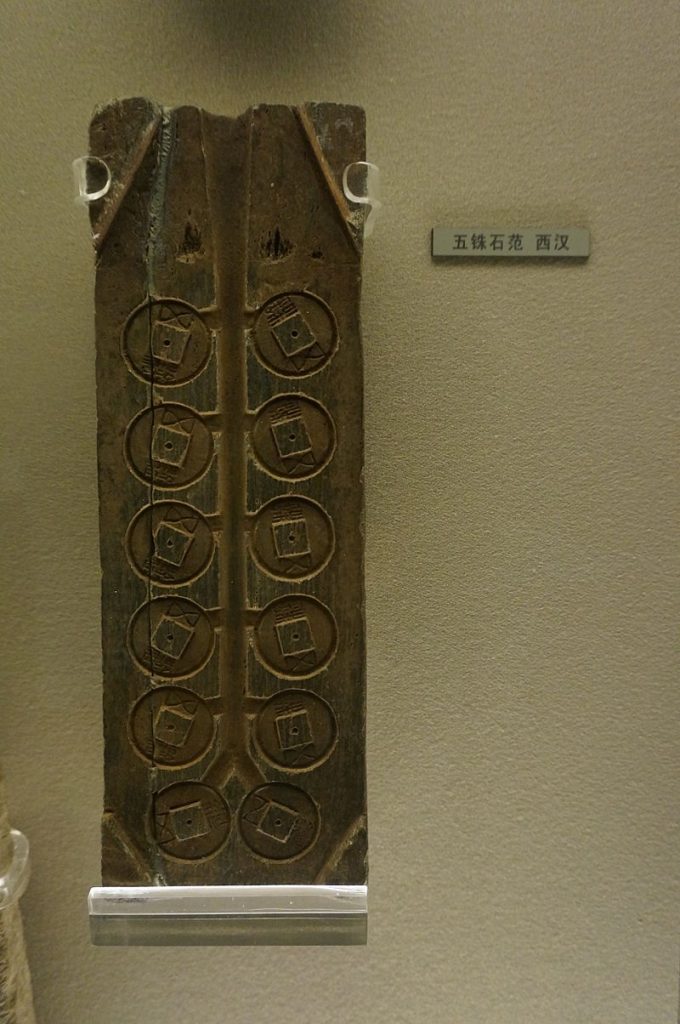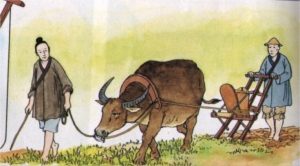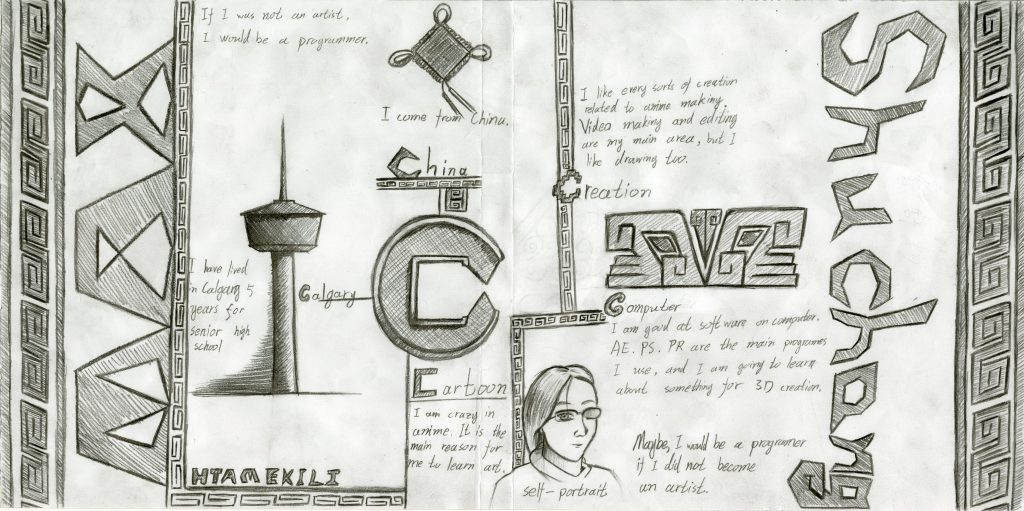Historical Background
First of all, let’s start from a little bit of Chinese information for this period. Han dynasty is the golden age of China when Europe is in the middle of the Classical period. Han dynasty mainly includes Western Han (206 BC–9 AD) and Eastern Han (25AD–220 AD), they are named differently because of the position of the central government. It is interrupted for a few years by Wang Mang, the nephew of grand empress dowager in that time. Mainly, we will learn some knowledge about tools and technology from the Western Han dynasty.
钱范(QianFan)
The Coin mould of Western Han Dynasty

Qian Fan is the mould for the production of coins in Western Han dynasty. Its material mainly can be pottery, stone, copper, iron, or lead. When casting coins, usually covering a Qian Fan with the other one or a flat board, and then injecting molten bronze into the hole. The inside ditches will drainage bronze liquid into each cell. After cooling, the coins will be taken down and separated. Due to the different methods, the coins which made by two combined moulds will have the pattern on both sides but the coins made with one flat board will have one side smooth.
长信宫灯(Chang Xin Gong Deng)
The Oil Lamp of Chang Xin Palace

Before Western Han dynasty, most of the Chinese oil lamps is a bracket for only holding the oil. However, in Western Han dynasty, people begin to consider the smoke produced by the burned oil because it smells bad and seriously damages the indoor furniture that the partial colour will be darkened. Therefore, the ancient Chinese designed this type of lamp that can collect the smoke into its inside. Chang Xin Gong Deng is a palace lamp, its name is from the inscription on it which writes about its owner’s palace. Its appearance is a palace maid holding a lamp, but it is hollow inside. Fire burns in the lamp part and people can control the light’s direction and brightness by the handle on it. Smoke will follow its sleeve into the body and become dirt. Its head and right arm are detachable which make people can easily clean it.
耧车(Lou Che)
The Plough in Western Han dynasty

Han dynasty largely improved the agricultural efficiency; one part of it is resulted by the development of the farming method, the other reason is the investment of plough in Western Han dynasty. Lou Che is the oldest seeding machine in China, which also revolutionarily increased the farming speed by simultaneously performing ditching, sowing, fertilizing, covering, suppressing.

When farming, Lou Che is fixed at a cow or other animals and pulled forward. Seeds are put in the box, and they will be sowed into the ground through the inside of the wood strips. It sowing speed is controllable in order to ensure the seed can be averagely lined into the soil. By the later historic record in Eastern Han dynasty, one person and one cow, their finished farming area can achieve one Qing (about 6.66 km2) per day.
References
https://en.wikipedia.org/wiki/Han_dynasty https://new.qq.com/omn/20181128/20181128C04R0Z.html
https://zh.wikipedia.org/wiki/%E9%92%B1%E8%8C%83
https://baike.baidu.com/item/%E9%92%B1%E8%8C%83 https://zh.wikipedia.org/wiki/%E9%95%B7%E4%BF%A1%E5%AE%AE%E7%87%88
https://baike.baidu.com/tashuo/topic?topicId=d6e5cbd731ac38efbb964ff0 https://zhidao.baidu.com/question/2143112561389621508?bd_page_type=0&pu=&init=middle
https://zh.wikipedia.org/wiki/%E8%80%AC
https://www.zhihu.com/question/291766752
http://www.i3done.com/course/4996.html http://zjbwg.cdstm.cn/index.phpm=sevenbooks&a=Showall&picid=793&i=2&placeid=144&typeid=75
http://www.meitianshe.cn/wenhua/baike-7.html
